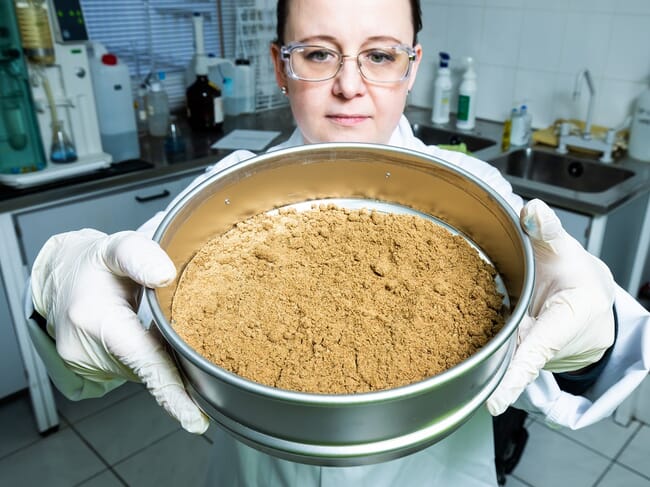
Fishmeal forms a key component of feeds for many aquatic species, as it contains a range of essential amino acids and is both palatable and digestible © Karen Murray, IFFO
According to IFFO the predominant factor contributing to this decline must be attributed to the 60 percent year-on-year decrease in Peru, where activities were heavily affected by the El Niño phenomenon and the subsequent cancellation of the April-June first fishing season of the year.
As for fish oil, total cumulative output in the first 10 months of 2023 was 20 percent down year on year. The supply shortage in Peru (due to both fewer landings and lower oil yields) was here again the main cause for such negative performance. Chile remained the only country that registered a positive change year on year, thanks to improved catches and higher-than-average oil yields in the south of the country.
The above figures are based on a list of countries considered in the IFFO reports - Peru, Chile, Denmark, Norway, Iceland, UK, Ireland, Faroe Islands, USA, South Africa, Ivory Coast, Mauritius and Spain.
In terms of local updates, as of 21 December, IFFO notes that around 66 percent of Peru’s second fishing season’s quota had been landed in the north-centre of the country. The early start of the second fishing season in the north-centre of Peru, which took place in October and is usually scheduled in November, explains larger catches of small pelagics than usual, when comparing October 2023 with October 2022.
Meanwhile, in the USA, the menhaden fishing season officially ended in November. The new fishing season will resume in May 2024.
The impact of China’s slow economic recovery
According to IFFO, China’s domestic production of fishmeal and fish oil in the final quarter of 2023 might exceed that reported in the same period of 2022.
Despite this, IFFO notes that local fishmeal producers are encountering difficulties in selling their products, due to an poorer demand and the abundance of standard quality fishmeal. As a result, the inventory of domestic fishmeal appears higher than it was a year ago. Cumulative imports of fishmeal from January to November have declined by 9.4 percent year on year, in line with the weaker domestic demand from both aqua- and piglet feed producers and the reduced Peruvian supply.
China’s 2023 fishmeal consumption in aquaculture is not expected to surpass that of 2022, although a rebound in the global supply of marine ingredients might open new scenarios. Similarly, the report continues, the pig sector is grappling with subdued prices, and the anticipated higher seasonal demand for the period November-February has yet to materialise. At this point in time, farmers are banking on improvements in the second half of 2024.




